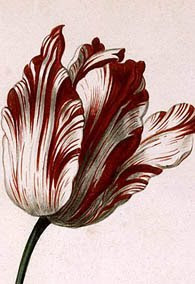
The world today is becoming an increasingly unhealthy place. The air we breathe is contaminated by pollutants, the food we eat has often been treated by agro-chemicals, and throughout the world many of us are dependant on stimulants such as alcohol, tobacco, caffeine or perhaps worse. In the twenty first century, toxicity is becoming a subject of growing concern. Major diseases such as cancer and cardiovascular illnesses can be directly associated to the accumulation of toxic wastes within the human body - along with less obvious health issues such as obesity, skin and gastrointestinal problems. It's because of such factors that the use of detoxifying diets is becoming evermore popular.
The human body constantly strives to remove toxins from within itself and this is – of course - a perfectly natural process. However, through the choices that we make, we can often create a build-up of toxins that remain in our bodies for extended periods of time – much of which would be stored within our body’s fat cells and liver.
There are two ways with which to approach this issue. One is to stop putting toxins into our bodies while the other is to eat those foods that enhance our bodies abilities to remove such poisons. One of the best-known and highly effective methods to do this is through a fruit detox diet – it is also one of the least expensive.
When commencing a fruit detox diet, you are encouraged not to eat anything other than fruit from morning until mid-day. The reason for this makes a lot of sense as the human body is still in the process of detoxification from the previous night.
It is the choice of fruits that are important here. Acid fruits such as grapes and lemons have a very strong detoxifying effect in comparison to all other fruit. Their natural enzymes give the digestive system a boost helping to breakdown food quicker and more efficiently as well as helping to release more vitamins, minerals and antioxidants into the body.
Another benefit of detoxifying the body with fresh fruits is that fruit does not create mucus - unlike meat and dairy products - as it travels through the gut. Any undigested fruit fibres that are left behind in the colon are moist and cleansing in nature, and are able to soften and remove existing mucus that has been allowed to build up over time.
In addition to this and to make the most of your time on a fruit ‘detox’ diet, try to avoid adding more stimulants - such as alcohol and caffeine - into the body. Also try to limit your intake of fast food, junk food, and any other heavily processed food items.
Before beginning a fruit ‘detox’ diet, you should consult with your doctor first, especially if you have any medical problems or are on any medications.
For related articles click onto the following links:
FOODS THAT IMPROVE YOUR SEX LIFE
WHAT ARE THE BEST FOODS TO EAT WHEN PREGNANT?
WHICH FOODS ARE BEST FOR THE SKIN?
WHY IS FRESH FRUIT SO GOOD FOR YOU?
20 Foods that Detox Your Body & MindFor related articles click onto the following links:
FOODS THAT IMPROVE YOUR SEX LIFE
WHAT ARE THE BEST FOODS TO EAT WHEN PREGNANT?
WHICH FOODS ARE BEST FOR THE SKIN?
WHY IS FRESH FRUIT SO GOOD FOR YOU?






































